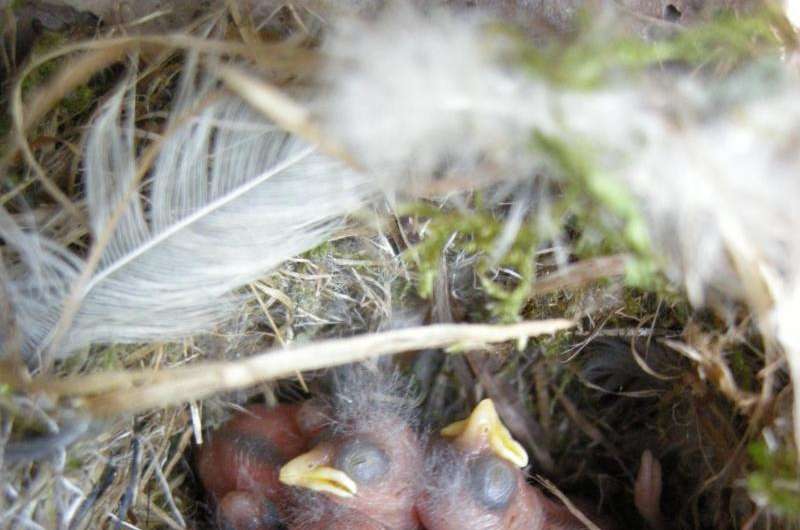Nest size variation not related to breeding success

Contrary to expectations, the size of the Blue Tits' nests is unrelated to their breeding success. The researchers behind a forthcoming study in The Auk: Ornithological Advances spent 18 years making more than 1,200 measurements of Blue Tit nests in southern France and found that bigger nests don't produce better birds after all.
Animal nests are designed to provide protection against threats such as severe weather, and if some individuals build bigger, better nests than others, does that lead to greater reproductive success? Nest box studies on nest size and breeding success have usually found only weak relationships between nest size and success, possibly because large nests in cavities are more vulnerable to predators, so Marcel Lambrechts of the Université de Montpellier and his colleagues protected their nest boxes using wire cages to see how nest size mattered in the absence of predation.
Measuring 1,280 nests over the course of 18 years and recording the brood size at hatching, brood size at fledging, and average nestling mass two weeks after hatching, Lambrechts and his colleagues found no relationship between nests' thickness or volume and the eventual success or failure of the nesting attempt. The researchers speculate that the birds were adjusting nest size and design to variations in the environment and that the relatively small nest boxes used in their study could have limited the maximum possible size of the nests.
"This study has a much larger sample size than previous ones, with data collected on Blue Tits over 18 years, but the results are similar to those of previous studies, namely that no significant relationship seems to exist between nest size and breeding success in cavity-nesting passerines. Thus, we still do not know the importance of having a thick nest," according to Tore Slagsvold of the University of Olso's Centre for Ecological and Evolutionary Synthesis. "Apparently, the selection for nest thickness is not very strong, since the variation is so great among females."
"Although Blue Tits are among the best-studied birds, nest structures have rarely been investigated in the framework of long-term studies, compared to other breeding traits such as laying date or clutch size. Perhaps one reason is that nest structures are complex and much more difficult to quantify," says Lambrechts. "Future work could focus on nest components, such as vegetation-based versus animal-based nest materials, exploring the theory that different nest components might have different functions, such as protection against harsh weather or against other species entering the nest chamber."
More information: "Nest size is not closely related to breeding success in Blue Tits: A long-term nest-box study in a Mediterranean oak habitat" will be available February 10, 2016, at www.aoucospubs.org/toc/tauk/133/2
Provided by The Auk




















